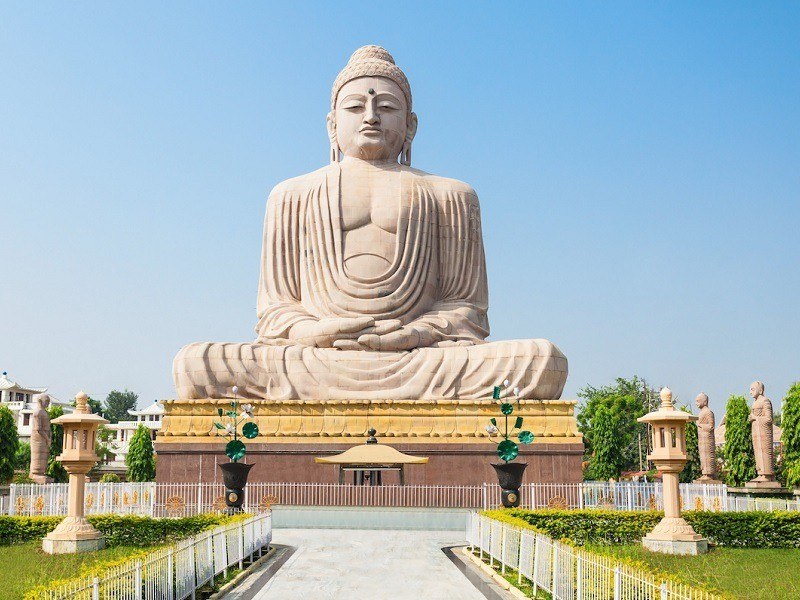Darjeeling: The Queen of the Hills in West Bengal Darjeeling, nestled in the Indian state of West Bengal, is one […]

Gaya District, Bihar
Gaya District, located in the southern part of Bihar, India, is a region steeped in historical, religious, and cultural significance. It serves as an important administrative and cultural center within the state and is known for its association with several major religious traditions, including Buddhism, Hinduism, and Jainism. The district encompasses the city of Gaya and several surrounding towns and villages, each contributing to the region’s rich heritage.
Historical and Religious Significance
- Gaya City:
The city of Gaya, the district headquarters, is renowned for its religious importance. It is considered a sacred site in Hinduism where pilgrims come to perform the Pind Daan ritual, a rite to honor deceased ancestors. According to Hindu beliefs, performing this ritual in Gaya helps ensure the peace of the souls of the departed. The Vishnupad Temple, dedicated to Lord Vishnu, is a major pilgrimage site where this ritual is performed. The temple houses a footprint believed to be that of Vishnu and is a significant center of worship. - Bodh Gaya:
Just a short distance from Gaya City, Bodh Gaya is one of the most important Buddhist pilgrimage sites in the world. It is the place where Siddhartha Gautama attained Buddhahood under the Bodhi Tree. The Mahabodhi Temple, a UNESCO World Heritage Site, marks the location of this significant event and is a focal point for Buddhist devotees from around the globe. The district’s association with Buddhism makes it a crucial destination for those interested in the teachings and history of Buddhism. - Nalanada:
Though technically a separate district, Nalanda is closely linked with Gaya due to its historical and educational significance. Nalanda was home to the ancient Nalanda University, one of the oldest residential universities in the world. Students from across Asia came here to study under the guidance of eminent scholars and monks. The ruins of this once-great institution are located a short drive from Gaya and attract scholars, historians, and tourists. - Other Religious Sites:
In addition to its Buddhist and Hindu sites, Gaya is also significant for Jainism. The district has several Jain temples and sites that are important to followers of Jain religion, further enriching its religious diversity.
Cultural and Economic Aspects
- Local Economy:
The economy of Gaya District is primarily driven by agriculture, with the fertile plains along the Phalgu River supporting the cultivation of various crops. The district’s agricultural products include rice, wheat, sugarcane, and pulses. In addition to agriculture, the district also benefits from tourism, with many visitors coming to see its religious sites and historical landmarks. - Festivals and Events:
Gaya hosts various religious and cultural festivals throughout the year. The Mahabodhi Temple in Bodh Gaya is a center for Buddhist festivals, including Buddha Jayanti (the celebration of Buddha’s birth), which attracts large crowds. Hindu festivals such as Chhath Puja and Navaratri are celebrated with great enthusiasm in the district, bringing together local communities in vibrant celebrations. - Local Crafts and Cuisine:
Gaya is known for its traditional crafts, including handloom products and local art forms. The cuisine of the district features a variety of traditional Bihari dishes, with rice, lentils, and vegetable curries forming the staple diet. Street food and local delicacies add to the district’s rich culinary heritage.
How to Reach Gaya District, Bihar
Gaya District is well-connected by various modes of transportation, making it accessible from different parts of India.
By Air:
Gaya Airport (GAY): The district has its own airport, Gaya Airport, which is located about 8 kilometers from Gaya City. The airport offers flights to and from major cities like Delhi, Kolkata, and Varanasi. From the airport, you can hire a taxi or take a local bus to reach different parts of the district.
By Rail:
Gaya Junction: Gaya is a major railway hub with a well-connected railway station, Gaya Junction. It is part of the East Central Railway zone and is connected to major cities like Patna, Delhi, Kolkata, and Varanasi. Trains from various parts of India arrive at Gaya Junction, making it a convenient entry point to the district.
By Road:
National Highways: Gaya is well-connected by road through National Highway 83 and National Highway 2. The district is accessible from Patna, which is approximately 100 kilometers away, and other nearby cities. You can hire a taxi, take a bus, or drive to Gaya via these highways. Regular bus services are available from Patna and other cities in Bihar.
Local Transportation:
Within the District: Once in Gaya, local transportation options include auto-rickshaws, cycle-rickshaws, and taxis. Public buses and shared vehicles are also available for travel within the district and to nearby towns and pilgrimage sites.
Conclusion
Gaya District, with its rich tapestry of historical, religious, and cultural significance, offers a unique and enriching experience for visitors. From the sacred sites of Bodh Gaya and Gaya City to the historical ruins of Nalanda, the district is a treasure trove of ancient heritage and spiritual landmarks. Its accessibility via air, rail, and road ensures that it is an easy and rewarding destination for pilgrims, tourists, and history enthusiasts alike.

